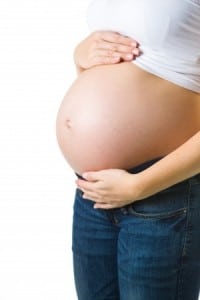
For quite some time, 35 has been thought to be the ‘magic’ age when women enter a higher pregnancy risk group. However, a study recently published in the journal Obstetrics and Gynecology has found that an increased risks for things like preterm birth, slow fetal growth and stillbirth could occur as early as age 30.
Using data from the Swedish and Norwegian medical birth registers, the study analyzed risk groups among age groups of women giving birth for the first time. The nearly 1 million women who gave birth between 1990 and 2010 were separated into four age groups:
- 25- to 29-years-old
- 30- to 34-years-old
- 35- to 39-years-old
- 40-years-old or higher
Researchers then analyzed the risks of these women and adjusted odds rations of certain categories, including very preterm birth, moderately preterm birth, small for gestational age, low Apgar score, fetal death and neonatal death.
After comparing the results, researchers found that the increased risk for premature birth (weeks 22-31 gestation) and stillbirth were higher for women in the ages of 30 to 34 than for those aged 25 to 29. This contradicts the previous knowledge that only women 35 or older are at risk.
“We were surprised that the risk for certain outcomes increased at such a relatively early age,” Ulla Waldenstrom, professor at the Department of Women’s and Children’s Health at Karolinska Institute told Medical News Today.
Granted, the researchers did say that the risk is still highest for women in older age groups, and certain factors like smoking or being overweight or obese “significantly increased” the risk of experiencing serious complications. However, the knowledge is something that should be passed along to couples and women planning to wait to have a family.
“For women individually, the risk is small, but for society at large there will be a significant number of ‘unnecessary’ complications with so many women having children just after 30,” Professor Waldenstrom said. “It would therefore be advisable to inform both women and men, even at schools, of how important age is to childbirth.”
When asked by Medical News Today how this new information might change recommendations from the group, Professor Waldenstrom responded:
“The best advice is to avoid smoking and overweight/obesity, if that is possible. I would also point at the very low risk for the individual woman. The prevalence of very preterm birth increased from 6/1000 women in a low risk group aged 25-29 years to 10/1000 at age 30-34, and the corresponding figures for stillbirths were from 2/1000 to 4/1000.”
The group says they will soon assess how the complications play out for women having a second or third child in their ‘advanced’ years. That registry is expected to include 2.2 million women.
Related Articles:
- ‘Historical Heroes’ and ‘Eccentric Ancestors’ Expected to be 2014’s Baby Naming Trend
- For Pregnant Moms trying to Quit Smoking, Nicotine Patches May Also Harm the Baby
- Study: Cesarean Rates Higher among Privately Insured Patients







I was 35 when my 4th pregnancy turned very complicated. My daughter Joy was born at 23 weeks last year. Due to modern medicine and prayers she is doing great today. I hemorrhaged at 17 weeks for the first of 4 times because of 100% placenta previa, which turned into placenta accreta (which I believe was caused by 3 prior c-sections). After she came home from 121 days in the NICU, I wrote a memoir called “From Hope To Joy” about my life-threatening? pregnancy and my daughter’s 4 months in the NICU (with my 3 young sons at ?home), which is now available on both the Amazon and Barnes&Noble websites. It was quite a roller ?coaster that I am certain some of you have been on or are currently riding on. My mission is to provide hope to women struggling with? high-risk pregnancies, encourage expectant mothers to educate themselves before ?electing cesarean deliveries, provide families of premature babies a realistic ?look at what lies ahead in their NICU journey, and show that miracles can ?happen, and hope can turn into joy.? Please see watch our amazing video of my daughter’s miracle birth and life at: http://www.youtube.com/watch?v=V_hleySg-iU
?Thank you.